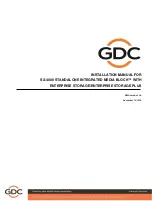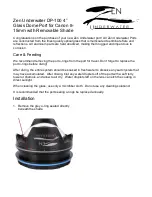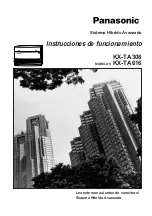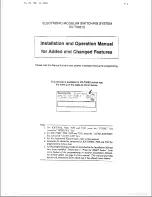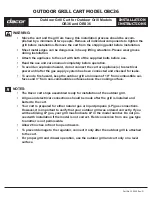
5
Initial and Seasonal Start-Up Checklist
General
1. Verify that the overall installation reflects the requirements of the installation guidelines found in EVAPCO
Bulletin 311 - Equipment Layout Manual, available at
www.evapco.eu
.
2. For multi-speed fan motors, verify that 30 second or greater time delays are provided for speed changes
when switching from high to low speed. Also check to see if interlocks are provided to prevent simultaneously
energizing high and low speed and confirm both speeds turn in the same direction.
3. Verify all safety interlocks work properly.
4. For units operating with a variable frequency drive, make certain that minimum speed requirements have
been set. Check with VFD manufacturer for recommended minimum speeds and recommendations on
locking out resonance frequencies.
5. Verify that the sensor used for fan sequencing and/or by-pass valve control is located downstream of the
point where the by-pass water mixes with the condenser supply water, if applicable.
6. Verify that a water treatment plan has been implemented including passivation of galvanized steel units. See
“Water Treatment” section for more details.
7. For units subject to freezing climates, high humidity climates, or idle periods lasting 24 hours or more,
motor space heaters are suggested and (if equipped) should be energized. Alternatively, fan motors may be
energized for 10 minutes, twice daily, to drive any moisture condensation out of the motor windings.
8. If the unit is going to sit idle for an extended period of time, follow all manufacturers’ fan motor and pump
instructions for long term storage. Plastic sheets or tarps should never be used to protect a unit during storage.
This practice can trap heat inside the unit, and could potentially cause damage to plastic components. See your
local EVAPCO representative for additional information on unit storage.
BEFORE BEGINNING ANY MAINTENANCE, BE CERTAIN THAT THE POWER IS
TURNED OFF AND THE UNIT IS PROPERLY LOCKED AND TAGGED OUT!
Initial and Seasonal Start-Up
1. Clean and remove any debris, such as leaves and dirt from the air inlets.
2. Flush the cold water basin (with the strainer screens in place) to remove any sediment or dirt.
3. Remove the strainer screen, clean and reinstall.
4. Check mechanical float valve to see if it operates freely.
5. Inspect water distribution system nozzles and clean as required. Check for proper orientation.
(This is not
required at initial start-up. The nozzles are clean and set at the factory).
6. Check to ensure drift eliminators are securely in place and in proper orientation.
7. Adjust fan belt tension as required. See “Fan Belt Adjustment” section.
8. Lubricate fan shaft bearings prior to seasonal start-up.
9. Turn the fan(s) by hand to insure it turns freely without obstructions.
10. Visually inspect the fan blades. Blade clearance should be approximately 10 mm (min. 6 mm) from tip of
blade to the fan cowl. The fan blades should be securely tightened to the fan hub.
11. If any stagnant water remains in the system including “dead legs” in the piping, the unit must be disinfected
prior to the fans being energized. Please refer to ASHRAE Guideline 12-2000 and CTI Guideline WTP-148
for more information and consult local legislation prior to start-up.
12. Fill the cold water basin manually up to the overflow connection.
13. All new evaporative cooling equipment and associated piping should be pre-cleaned and flushed to remove
grease, oil, dirt, debris and other suspended solids prior to operation. Any pre-cleaning chemistry should be
compatible with the cooling equipment’s materials of construction. Alkaline formulations should be avoided
for systems which include galvanized materials of construction
[EU]
.
After the unit has been energized, check the following:
1. Adjust mechanical float valve as required.
2. Unit basin should be filled to the proper operating level. See “Recirculating Water System – Operating
Levels” section for more details.
3. Verify fan is rotating in proper direction.
4. Measure voltage and current on all three power leads. The current must not exceed the
motor nameplate full load amp rating.
5. Adjust bleed valve to proper flow rate. Maximum bleed-off is 3,2 l/min per 100 kW.
Consult your qualified water treatment person to fine tune the minimun bleed necessary.
Summary of Contents for AT 110-112
Page 39: ...39 ...





















